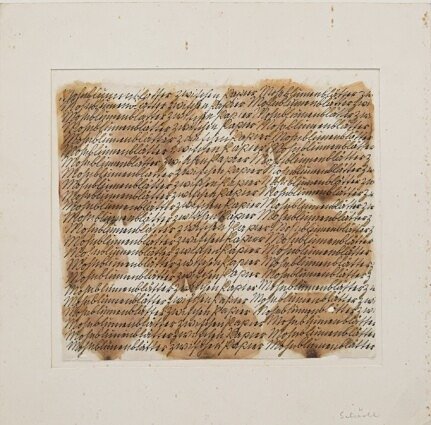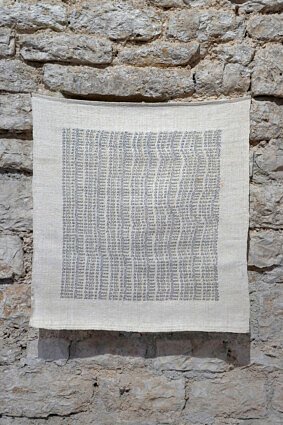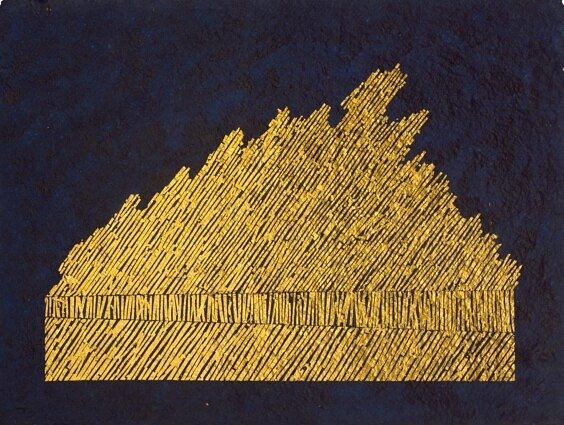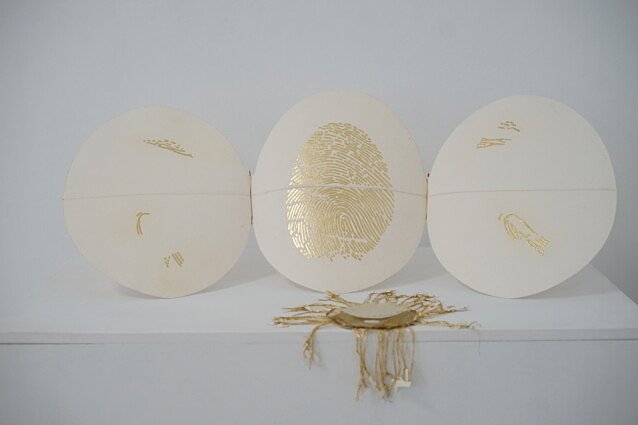Greta
Schödl
Biography
She started from the textile art and, through graphic exercises, she encountered calligraphy in Bologna in the end of the 1950s. Moving from the graphic sign to freer elements, oscillations and vibrations of the line, she came to investigate the behavior of the thread and, through this instrument, the profound meaning of the female experiences. She uses paper or textile media, where she literally weaves her words.
The emphasis of her work, however, is not limited to the verbal element but rather to its arrangement within a well-defined space and the relationship it creates with the support used. Her work is the backdrop to a rhythm which, through small gold signs, highlights the relationship created between the artist and the object. Considered one of the most important artists of visual poetry, she participated in the 1978 Venice Biennale and numerous important national and international exhibitions.
Critical text
The whole body of research carried out by Greta Schödl for some years now appears to me a far-reaching enquiry into how to give analogical artistic expression to women, and women’s work with needle and thread. Schödl herself says:
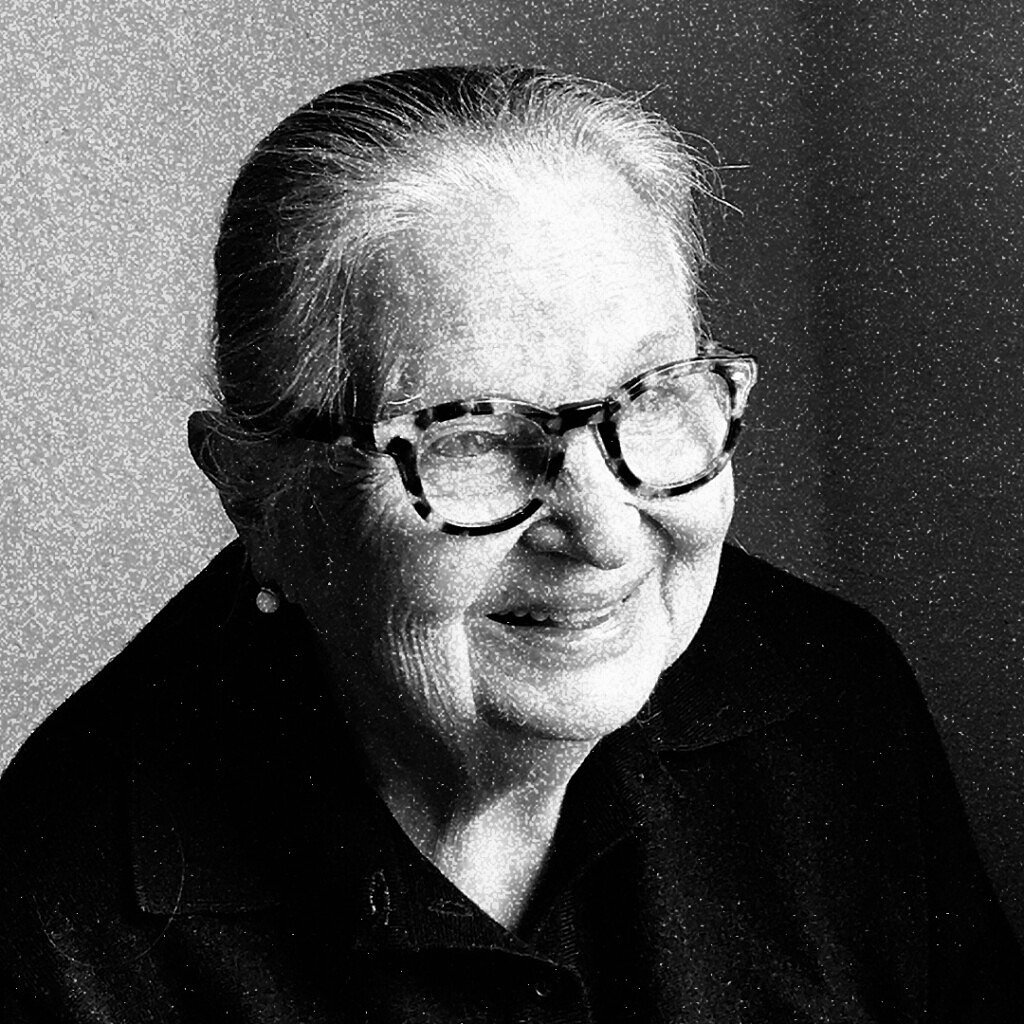
‘I abandoned graphic art to adopt a wider series of signs, which gradually led me to analyse vibrations and oscillations using continuous strokes on flat surfaces, and then to investigate the particular behavioural patterns of thread’. n fact, the highly distinctive features characterizing Schödl’s work seem symbolically to paraphrase the deepest significance of what it is to be a woman in this world, to be part of life that slowly weaves the subtle mesh that forms the essence of femininity – a weave of intelligence, love, affect, and intense dedication to the everyday patterns of life and the elements they comprise. Yet while Schödl captures the female traditions of millennia, hers is also a gaze that seeks out and discovers new prospects. Weaving together the ‘things’ of life – especially those belonging to women’s lives – Schödl also succeeds in distancing herself, at times even casting an ironic eye on her subject. The transcription of the objects of this world takes on all the subtlety and finesse of an anthropological study.”
_Lara Vinca Masini
